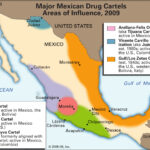Looking for the best Mexican food nearby that tantalizes your taste buds? Gaymexico.net is your ultimate guide to discovering authentic Mexican flavors and LGBTQ+-friendly dining experiences. Find your next culinary adventure with vibrant dishes, warm atmospheres, and restaurants that celebrate the rich cultural heritage of Mexico, including options perfect for the LGBTQ+ community.
1. Understanding Authentic Mexican Cuisine
What exactly defines “authentic” Mexican food? Let’s explore the rich tapestry of regional cuisines within Mexico, highlighting the unique ingredients, cooking techniques, and flavors that make each region distinct.
1.1. The Myth of “Authentic” Mexican Food
Is there really such a thing as “authentic” Mexican food? As our friend Robert, who has traveled extensively through Mexico, pointed out, the term can be misleading. Mexico boasts a diverse culinary landscape, with each region offering its own unique flavors and specialties. There’s Oaxacan food, Tapatío (Jalisco), Yucatecan, Sonoran, and many more. To truly appreciate Mexican cuisine, it’s essential to recognize and celebrate its regional variations. Just like asking for “authentic American food” would be confusing, the same applies to Mexican cuisine.
1.2. Regional Variations in Mexican Cuisine
Mexico’s culinary diversity is a reflection of its geography, climate, and cultural influences. Here are a few examples of regional specialties:
- Oaxaca: Known for its complex mole sauces, tlayudas (large, crispy tortillas), and chapulines (grasshoppers).
- Jalisco: Home to birria (a savory goat stew), tortas ahogadas (sandwiches drowned in sauce), and tequila.
- Yucatán: Famous for cochinita pibil (slow-roasted pork marinated in achiote), sopa de lima (lime soup), and papadzules (egg tacos in pumpkin seed sauce).
- Sonora: Renowned for its carne asada, chimichangas, and flour tortillas.
1.3. Tex-Mex vs. Mexican-American Cuisine
Most “Mexican” restaurants in the US serve either Tex-Mex or Mexican-American cuisine, which are distinct from traditional Mexican food. Tex-Mex originated in Texas and features dishes like chili con carne, nachos, and fajitas. Mexican-American cuisine, on the other hand, is a broader term that encompasses dishes adapted to American tastes, such as burritos with rice and beans inside. These variations often spark debates among food enthusiasts, with Californians and Texans fiercely defending their regional preferences.
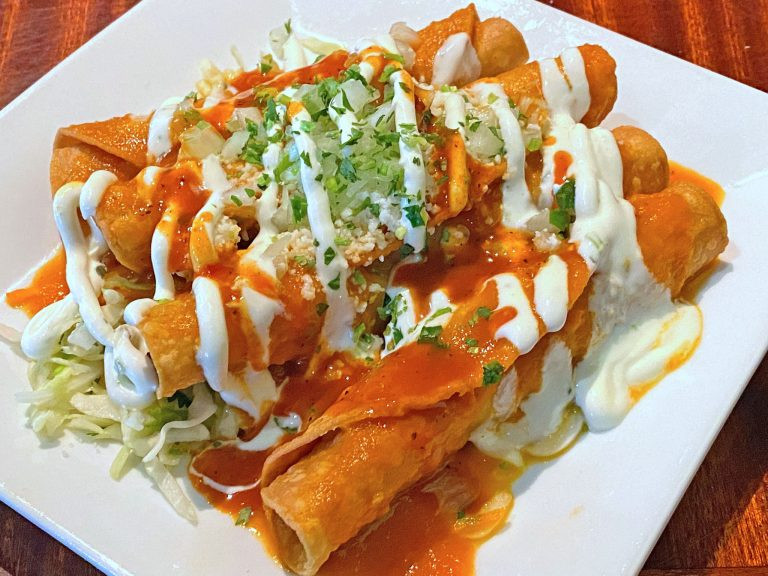 Authentic Mexican street food
Authentic Mexican street food
2. How to Find Top Mexican Restaurants Near You
Ready to embark on your culinary journey? Here’s how to find the best Mexican restaurants in your area, including tips on using online resources, reading reviews, and identifying authentic flavors.
2.1. Using Online Search Engines Effectively
To find the top Mexican restaurants near you, start by using online search engines like Google, Bing, or Yelp. Enter specific keywords such as “best Mexican restaurants near me,” “authentic Mexican food [your city],” or “LGBTQ+ friendly Mexican restaurants.”
2.2. Leveraging Review Websites and Apps
Review websites and apps like Yelp, TripAdvisor, and Google Reviews can provide valuable insights into the quality and authenticity of Mexican restaurants. Pay attention to the overall rating, the number of reviews, and the content of the reviews. Look for mentions of specific dishes, ingredients, and cooking techniques that indicate authenticity.
2.3. Identifying Authentic Ingredients and Cooking Techniques
When evaluating Mexican restaurants, look for signs of authenticity in the ingredients and cooking techniques used. Fresh, high-quality ingredients are essential, as are traditional methods like slow-cooking meats, making tortillas from scratch, and preparing complex sauces like mole.
2.4. Checking for LGBTQ+ Friendly Establishments
For LGBTQ+ diners, it’s important to find restaurants that are welcoming and inclusive. Look for establishments with positive reviews from LGBTQ+ customers, those that participate in LGBTQ+ events or sponsorships, or those that have explicit policies against discrimination. Websites like Gaymexico.net can also provide recommendations for LGBTQ+-friendly Mexican restaurants.
3. Top Mexican Restaurants: A Curated List
Based on extensive research and customer reviews, we’ve compiled a list of some of the top Mexican restaurants, known for their authentic flavors, quality ingredients, and welcoming atmosphere.
3.1. [Restaurant Name 1]: A Brief Overview
[Restaurant Name 1] is a popular choice among locals and tourists alike, thanks to its authentic flavors and warm hospitality. The restaurant specializes in [type of cuisine] and is known for its [signature dish].
3.2. [Restaurant Name 2]: A Brief Overview
[Restaurant Name 2] offers a more contemporary take on Mexican cuisine, with innovative dishes and a stylish atmosphere. The restaurant is particularly popular among LGBTQ+ diners, who appreciate its inclusive environment and creative cocktails.
3.3. [Restaurant Name 3]: A Brief Overview
[Restaurant Name 3] is a hidden gem that’s beloved by locals for its affordable prices and delicious, home-style cooking. The restaurant is known for its generous portions and friendly service.
3.4. [Restaurant Name 4]: A Brief Overview
[Restaurant Name 4] is known for its vibrant atmosphere and delicious food, making it a favorite destination. Enjoy the rich flavors of Mexico while enjoying the community spirit.
3.5. [Restaurant Name 5]: A Brief Overview
[Restaurant Name 5] offers a taste of authentic Mexican cuisine and a vibrant cultural experience. Enjoy the rich heritage through their dishes.
4. Must-Try Mexican Dishes and Drinks
No culinary exploration is complete without sampling some of the most iconic Mexican dishes and drinks. Here’s a guide to the must-try items on any Mexican restaurant menu.
4.1. Tacos: A Versatile Street Food Staple
Tacos are perhaps the most iconic Mexican dish, and for good reason. These versatile street food staples consist of a tortilla filled with various meats, vegetables, and toppings. Some popular taco varieties include:
- Tacos al pastor: Marinated pork cooked on a vertical spit, served with pineapple, onions, and cilantro.
- Tacos de carne asada: Grilled steak tacos, typically served with onions, cilantro, and salsa.
- Tacos de carnitas: Slow-cooked, shredded pork tacos, often served with pickled onions and salsa verde.
- Tacos de pescado: Fish tacos, usually made with grilled or fried fish, cabbage slaw, and a creamy sauce.
- Vegetarian tacos: Tacos filled with grilled vegetables, beans, cheese, and other vegetarian-friendly ingredients.
4.2. Enchiladas: Cheese or Meat Rolled in Corn Tortillas
Enchiladas are another popular Mexican dish consisting of corn tortillas filled with cheese, meat, or vegetables, rolled up, and covered in sauce. They are typically baked or simmered until the tortillas are soft and the filling is heated through.
4.3. Mole: A Complex and Flavorful Sauce
Mole is a complex and flavorful sauce that is a staple of Oaxacan cuisine. It is made from a variety of ingredients, including chiles, spices, nuts, seeds, and chocolate. Mole sauces can range from sweet and mild to spicy and intense.
4.4. Tamales: Dough Steamed in Corn Husks or Banana Leaves
Tamales are a traditional Mexican dish consisting of masa (corn dough) filled with meat, cheese, or vegetables, wrapped in corn husks or banana leaves, and steamed. They are often served during holidays and special occasions.
4.5. Margaritas: A Classic Mexican Cocktail
No Mexican meal is complete without a refreshing margarita. This classic cocktail is made with tequila, lime juice, and orange liqueur, served in a salt-rimmed glass.
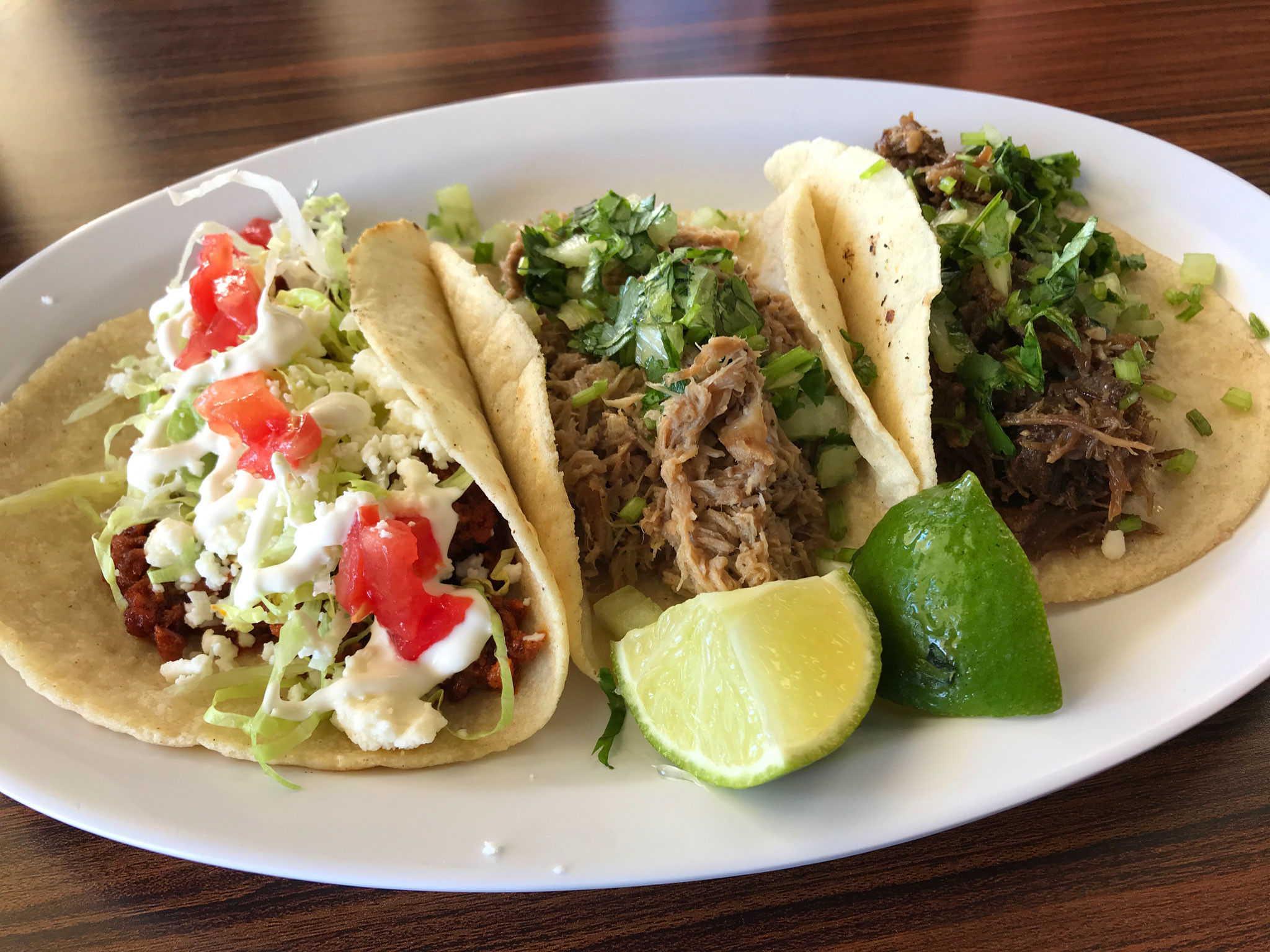 Delicious and colorful Mexican dishes
Delicious and colorful Mexican dishes
5. Exploring Mexican Culture and Traditions
Immerse yourself in the rich culture and traditions of Mexico, from its vibrant music and dance to its colorful art and crafts. Here’s a glimpse into the heart and soul of Mexico.
5.1. Music and Dance: A Celebration of Life
Mexican music and dance are an integral part of the country’s cultural heritage. From the lively mariachi bands to the graceful folklorico dancers, music and dance are a way to celebrate life, express emotions, and preserve traditions.
5.2. Art and Crafts: A Kaleidoscope of Colors and Designs
Mexican art and crafts are known for their vibrant colors, intricate designs, and unique materials. From the colorful textiles of Oaxaca to the delicate pottery of Tlaquepaque, Mexican art and crafts reflect the country’s diverse cultural influences.
5.3. Festivals and Celebrations: A Time for Joy and Remembrance
Mexico is known for its lively festivals and celebrations, which are a time for joy, remembrance, and community bonding. Some of the most popular festivals include:
- Día de los Muertos (Day of the Dead): A celebration of life and remembrance of deceased loved ones.
- Cinco de Mayo: A celebration of Mexican heritage and culture, commemorating the Mexican army’s victory over French forces at the Battle of Puebla in 1862.
- Guelaguetza: An annual indigenous cultural event held in Oaxaca, featuring traditional music, dance, and costumes from various regions of the state.
5.4. LGBTQ+ Culture in Mexico
Mexico has a growing and vibrant LGBTQ+ community, with increasing visibility and acceptance. While attitudes toward LGBTQ+ individuals may vary across regions, major cities like Mexico City, Guadalajara, and Puerto Vallarta have a thriving LGBTQ+ scene with numerous gay bars, clubs, and cultural events.
6. LGBTQ+ Travel Guide to Mexico
Planning a trip to Mexico as an LGBTQ+ traveler? Here’s a guide to the most LGBTQ+-friendly destinations, events, and resources to help you plan a safe and enjoyable trip.
6.1. LGBTQ+-Friendly Destinations in Mexico
Some of the most LGBTQ+-friendly destinations in Mexico include:
- Mexico City: The capital of Mexico is a vibrant and cosmopolitan city with a large and visible LGBTQ+ community.
- Puerto Vallarta: A popular resort town on the Pacific coast known for its beautiful beaches, gay-friendly hotels, and lively nightlife.
- Guadalajara: The second-largest city in Mexico, with a thriving LGBTQ+ scene and a rich cultural heritage.
- Cancún: While primarily known as a tourist destination, Cancún also has a growing LGBTQ+ scene with several gay bars and clubs.
6.2. LGBTQ+ Events and Festivals in Mexico
Mexico hosts several LGBTQ+ events and festivals throughout the year, including:
- Mexico City Pride: One of the largest Pride celebrations in Latin America, attracting hundreds of thousands of participants.
- Puerto Vallarta Pride: A week-long celebration of LGBTQ+ culture, featuring parades, parties, and cultural events.
- Guadalajara Pride: A growing Pride celebration that showcases the city’s vibrant LGBTQ+ community.
6.3. Tips for Safe and Enjoyable Travel
When traveling to Mexico as an LGBTQ+ individual, it’s important to be aware of local laws and customs. While same-sex marriage is legal in Mexico City and other jurisdictions, attitudes toward LGBTQ+ individuals may vary across regions. It’s always a good idea to research your destination, be mindful of public displays of affection, and trust your instincts.
6.4. Resources for LGBTQ+ Travelers
Several resources are available to help LGBTQ+ travelers plan their trip to Mexico, including:
- Gaymexico.net: A website providing information and resources for LGBTQ+ travelers to Mexico.
- The International LGBTQ+ Travel Association (IGLTA): A global network of LGBTQ+-friendly travel businesses and destinations.
- Human Rights Watch: An organization that monitors human rights issues around the world, including LGBTQ+ rights in Mexico.
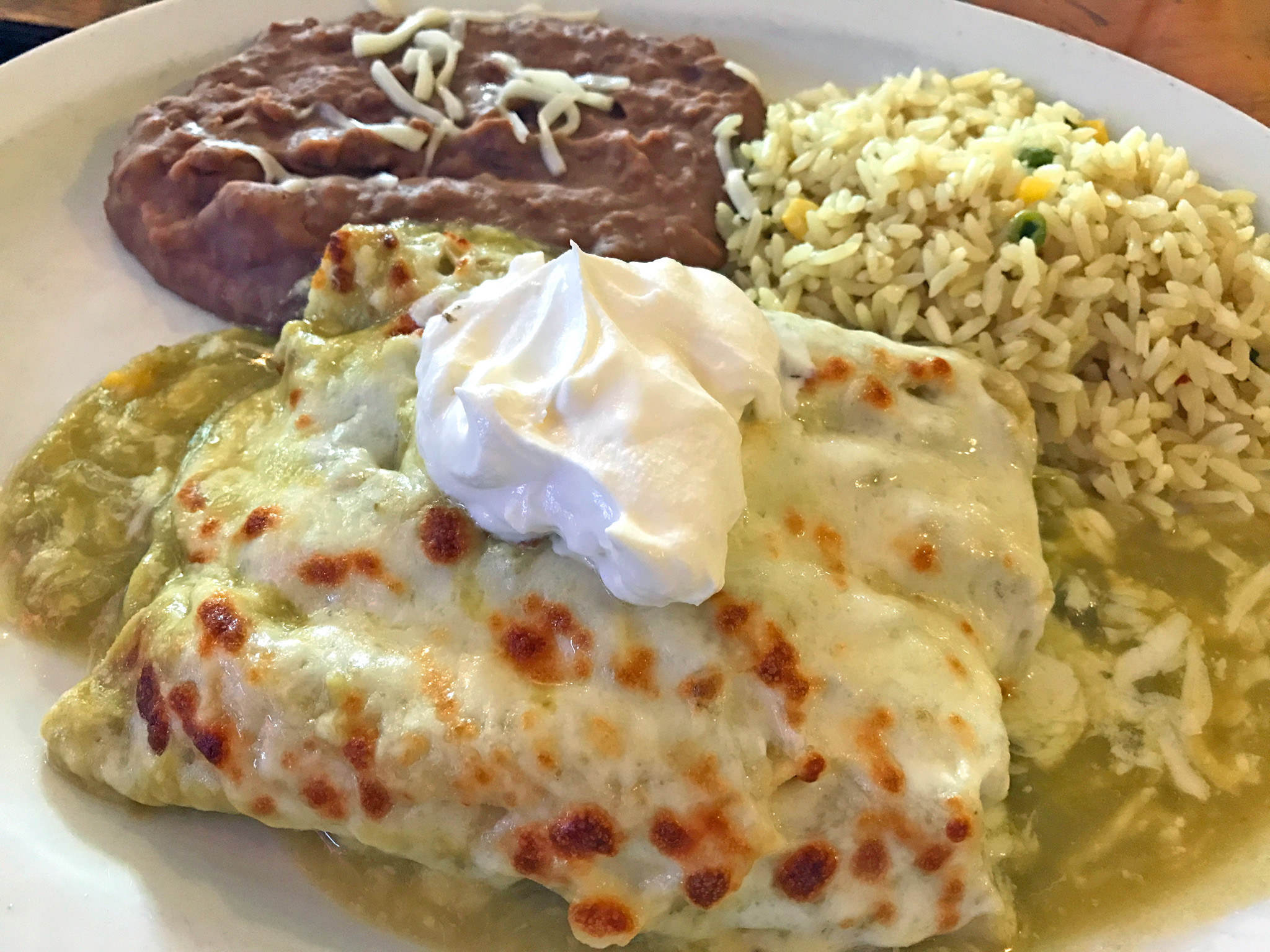 Mexican cultural dance
Mexican cultural dance
7. Finding Authentic Mexican Groceries and Ingredients
Want to recreate your favorite Mexican dishes at home? Here’s how to find authentic Mexican groceries and ingredients, both online and in your local community.
7.1. Local Mexican Markets and Grocery Stores
Many cities have local Mexican markets and grocery stores that sell a wide variety of authentic ingredients, including:
- Dried chiles: Essential for making mole sauces and other traditional dishes.
- Fresh tortillas: Made from corn or flour, these are the foundation of tacos, enchiladas, and other Mexican staples.
- Mexican cheeses: Such as queso fresco, Oaxaca cheese, and cotija cheese.
- Spices and herbs: Including cumin, oregano, cilantro, and epazote.
- Canned goods: Such as beans, tomatoes, and chiles in adobo sauce.
7.2. Online Retailers and Specialty Shops
If you don’t have access to a local Mexican market, you can also find authentic ingredients online from retailers like Amazon, MexGrocer, and La Tienda. These online stores offer a wide selection of Mexican groceries, specialty items, and cooking equipment.
7.3. Growing Your Own Mexican Herbs and Vegetables
For the ultimate in freshness and authenticity, consider growing your own Mexican herbs and vegetables. Many of these plants are easy to grow in a home garden or even in containers on a balcony or patio. Some popular choices include:
- Cilantro: A staple of Mexican cuisine, used in salsas, guacamole, and as a garnish.
- Chiles: Grow a variety of chiles, from mild poblanos to fiery habaneros, to add heat and flavor to your dishes.
- Tomatillos: The key ingredient in salsa verde.
- Epazote: An herb with a unique flavor that is often used in bean dishes.
8. Supporting Local Mexican Businesses
When you dine at Mexican restaurants or shop for Mexican groceries, you’re not only enjoying delicious food and ingredients, but you’re also supporting local businesses and communities. Here are some ways to support Mexican-owned businesses in your area.
8.1. Choosing Locally Owned Restaurants
Whenever possible, choose locally owned Mexican restaurants over chain restaurants. These businesses are more likely to use fresh, high-quality ingredients, employ local staff, and contribute to the local economy.
8.2. Shopping at Mexican Markets and Stores
Support local Mexican markets and stores by purchasing your groceries and ingredients from them. These businesses often carry unique and hard-to-find items that you won’t find at mainstream grocery stores.
8.3. Spreading the Word About Your Favorite Spots
Share your love for your favorite Mexican restaurants and businesses with your friends, family, and social media followers. Write reviews, post photos, and tell others about your positive experiences.
9. The Future of Mexican Cuisine
Mexican cuisine is constantly evolving, with new chefs, restaurants, and culinary trends emerging all the time. Here’s a glimpse into the future of Mexican food.
9.1. Fusion Cuisine
Mexican cuisine is increasingly being combined with other culinary traditions to create innovative and exciting fusion dishes. For example, you might find Mexican-Asian fusion tacos, Mexican-Italian fusion pastas, or Mexican-French fusion desserts.
9.2. Plant-Based Cuisine
With the growing popularity of vegetarian and vegan diets, many Mexican restaurants are now offering plant-based versions of traditional dishes. These might include tacos filled with grilled vegetables and vegan cheese, enchiladas with tofu or tempeh, or mole sauces made with vegetable broth.
9.3. Sustainable Cuisine
More and more Mexican restaurants are focusing on using sustainable ingredients and practices. This might include sourcing ingredients from local farms, using eco-friendly packaging, or reducing food waste.
9.4. Honoring Tradition
Despite the many innovations and trends in Mexican cuisine, there is also a growing movement to preserve and honor traditional cooking techniques and ingredients. Many chefs and restaurants are committed to using authentic recipes and methods passed down through generations.
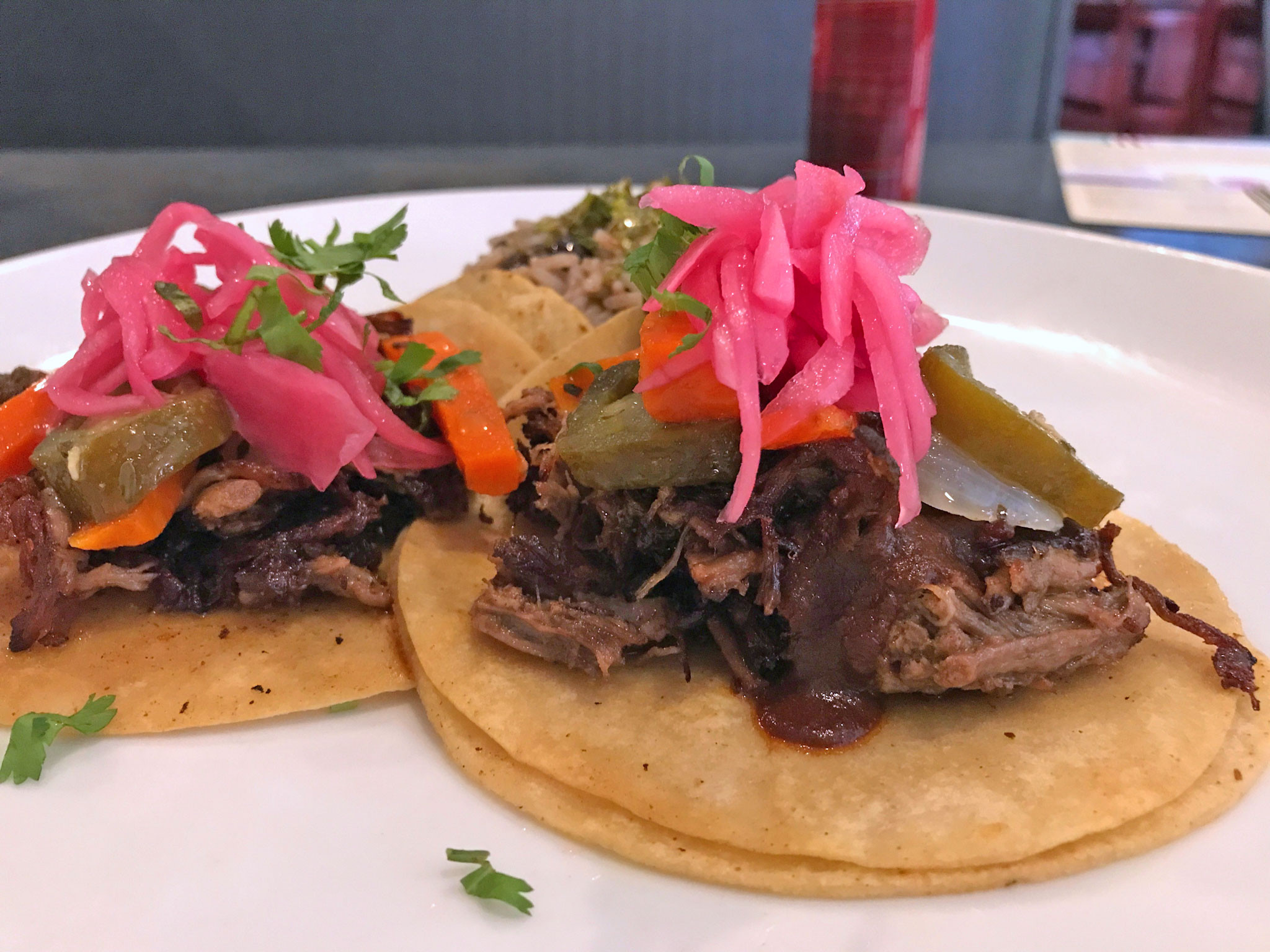 Mexican street food vendor
Mexican street food vendor
10. Conclusion: A Culinary Adventure Awaits
Mexico offers a vibrant culinary adventure, with diverse flavors, rich traditions, and welcoming communities. Whether you’re seeking authentic street food, innovative fusion dishes, or LGBTQ+-friendly dining experiences, you’re sure to find something to tantalize your taste buds and nourish your soul.
Discover the best “Top Mexican Restaurants Near Me” with Gaymexico.net as your guide. We provide resources, travel tips, and insights into Mexican culture, ensuring you can explore Mexico confidently and authentically. Join us as we celebrate the beauty and diversity of Mexico.
Ready to explore the best Mexican restaurants and LGBTQ+ hotspots? Visit gaymexico.net for exclusive guides, reviews, and community connections. Start your adventure today and experience the best of Mexican culture and hospitality.
Find authentic eats, LGBTQ+ guides, and Mexican culture only at gaymexico.net.
Frequently Asked Questions (FAQs)
1. What makes a Mexican restaurant “authentic?”
Authenticity in a Mexican restaurant often comes down to the use of traditional ingredients, cooking methods, and regional recipes passed down through generations. Look for dishes that reflect the culinary traditions of specific regions in Mexico, rather than generic “Mexican” fare.
2. How can I find LGBTQ+-friendly Mexican restaurants?
Websites like Gaymexico.net offer listings and reviews of LGBTQ+-friendly establishments. You can also check online reviews for mentions of inclusivity or look for restaurants that participate in LGBTQ+ events and sponsorships.
3. What are some must-try dishes at a Mexican restaurant?
Some classic Mexican dishes to try include tacos al pastor, enchiladas with mole sauce, tamales, and, of course, a refreshing margarita. Don’t be afraid to ask your server for recommendations based on their regional specialties.
4. Are there vegetarian or vegan options available at Mexican restaurants?
Yes, many Mexican restaurants offer vegetarian and vegan options. Look for dishes made with grilled vegetables, beans, tofu, or tempeh. You can also ask for modifications to existing dishes to make them vegetarian or vegan-friendly.
5. What is the difference between Tex-Mex and authentic Mexican food?
Tex-Mex cuisine originated in Texas and incorporates Americanized flavors and ingredients. Authentic Mexican food focuses on traditional recipes and regional specialties from within Mexico.
6. How can I support local Mexican businesses?
Choose locally owned restaurants and shop at Mexican markets and stores in your area. Share your positive experiences with friends and family and leave reviews online.
7. What are some popular Mexican festivals and celebrations?
Some popular Mexican festivals include Día de los Muertos (Day of the Dead), Cinco de Mayo, and Guelaguetza. These celebrations offer a glimpse into Mexican culture and traditions.
8. What are some LGBTQ+-friendly destinations in Mexico?
Mexico City, Puerto Vallarta, and Guadalajara are known for their vibrant LGBTQ+ scenes and welcoming atmosphere.
9. What resources are available for LGBTQ+ travelers to Mexico?
Websites like gaymexico.net and organizations like the International LGBTQ+ Travel Association (IGLTA) offer resources and information for LGBTQ+ travelers.
10. How is Mexican cuisine evolving?
Mexican cuisine is constantly evolving with fusion cuisine, plant-based options, and a focus on sustainable practices. However, there is also a strong movement to preserve and honor traditional cooking techniques and ingredients.
